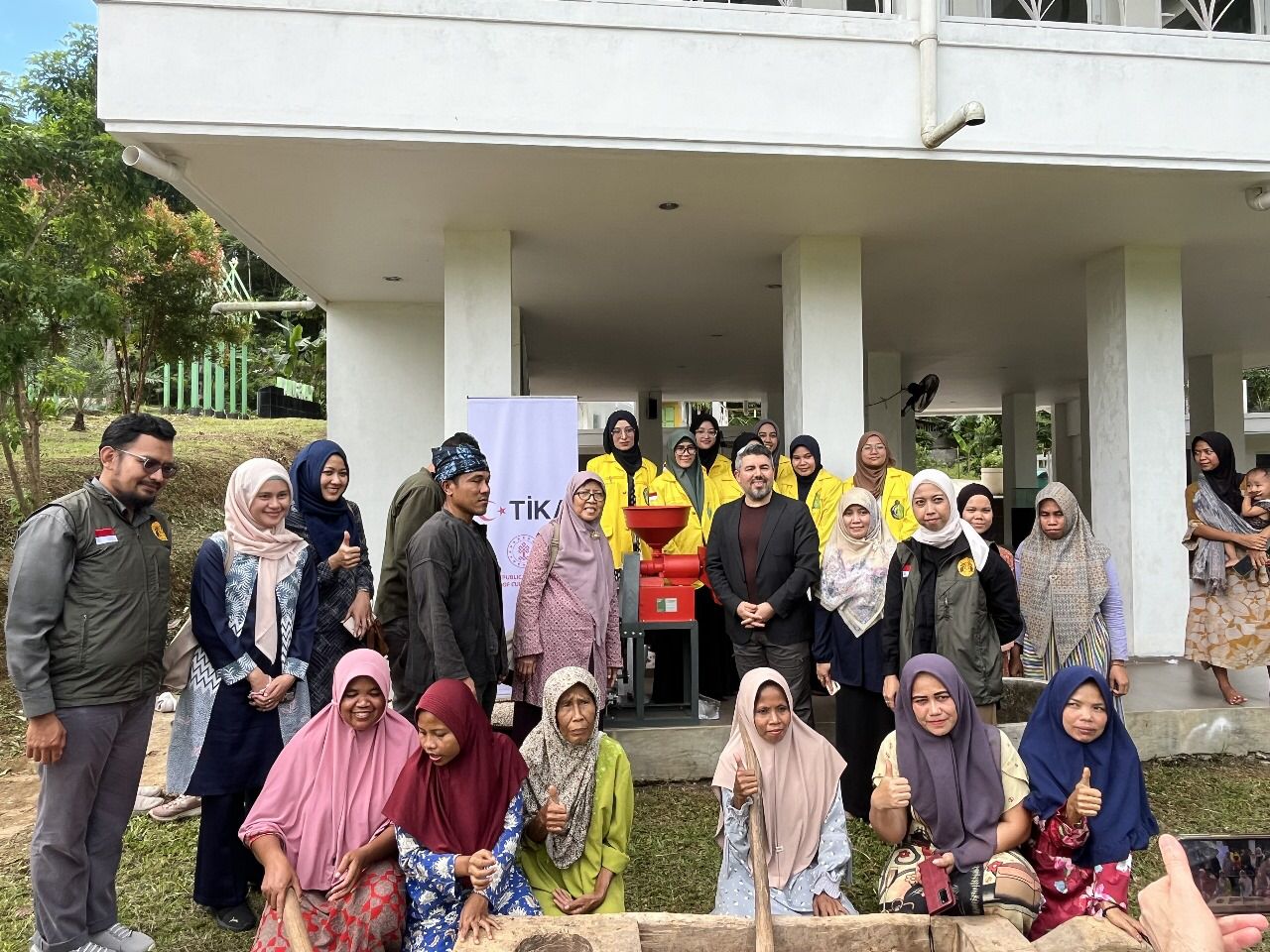At the inauguration led by the Rector of Universitas Indonesia, Prof. Ari Kuncoro, S.E., M.A., Ph.D, Prof. Dra. Wellyzar Sjamsuridzal, M.Sc., Ph.D. delivered a speech titled “Mengungkap Rahasia Alam Mikroorganisme Melalui Ilmu Biosistematika” (Revealing the Secrets of the Nature of Microorganisms Through Biosystematics). Her inauguration as a professor in the field of Systematics and Prospection of Microorganisms, Faculty of Mathematics and Natural Sciences (FMIPA), was held at Balai Sidang, UI Depok Campus, on Wednesday, November 13. She explained that microorganisms are very small organisms—ranging from 0.1 to 10 micrometers—that can be seen with the aid of a microscope, have diversity in shape, size, structure, reproduction methods, and have a very important role in nature and everyday life.
On the earth’s surface which consists of 29.2% land and 70.8% water, not many people know that 90% of the biomass in the aquatic environment is microorganisms. Almost all respiration processes (98%) in the ocean are carried out by microorganisms. Microorganisms such as bacteria and archaea play a key role in marine respiration, especially in the decomposition of organic matter.
However, currently, only about 1% of the estimated number of microorganism species on earth have been successfully revealed, even though microorganisms are the largest component of biodiversity on earth. That is why it is very important to reveal the diversity of microorganisms and their roles in the environment, as well as their potential applications in the field of biotechnology.
In revealing this, the science of microorganism biosystematics is needed, which studies the identification, classification, and understanding of evolutionary relationships between various types of microorganisms, including bacteria, archaea, fungi, algae, and viruses. This science integrates morphological, physiological, genetic, and biochemical approaches in compiling and documenting the diversity of microorganisms in nature.
“The integration of biosystematics with the current genomic approach not only deepens our understanding of microorganisms and their roles in the ecosystem, but also opens up new opportunities for innovation in various fields, including health, agriculture, food, the environment, and biotechnology. The resulting research can accelerate the discovery of solutions to the challenges faced by the nation and the world today,” said Prof. Wellyzar.
On that occasion, Prof. Wellyzar presented the results of her research in applying biosystematics to uncover the mystery of microorganisms in Indonesia. She and her team have proven that the forest in the Cisolok geothermal area is a strategic habitat for finding various new taxa of microorganisms. The area is a biodiversity hotspot for the rare bacteria group-Actinobacteria and the phylum Chloroflexota. Exploration of thermophilic bacteria in geysers and hot springs in Indonesia has been reported since 1991.
Research related to the exploration and application of thermophilic bacteria is currently increasing. Long-term monitoring and conservation of the natural ecosystem of hot springs is important and requires attention in terms of commercial applications. Although some studies are based on industrial applications, there is still very little evidence up to the commercial scale. “Therefore, it is important for stakeholders to bridge the gap in the downstream process of research products so that they can reach the people who need them,” said Prof. Wellyzar.
She added that it is necessary to build a database specifically for big data on the genomes of tropical Indonesian microorganisms and information related to their Biosynthetic gene clusters (BGCs). This data contributes to improving the understanding of the diversity and evolution of tropical microorganisms in Indonesia, as well as their role in the environment.
In addition, she also said that the existence of microorganism culture collections in Indonesia needs to be improved in their role in preserving, providing, and promoting the use of genetic resources of microorganisms that are scientifically interesting and useful in industry in Indonesia and globally. Membership at regional and global levels gives culture collections recognition and visibility in the international scientific community.
“This recognition can improve the reputation and credibility of culture collections, and attract collaboration, partnerships, and funding opportunities from national and international organizations. This collaborative effort will bring significant progress in various fields such as medicine, agriculture, and biotechnology in Indonesia,” said Prof. Wellyzar.
Until now, Prof. Wellyzar has been actively conducting various research and has been published in national and international journals. Some of them are Spesies Apakah Itu? Menjawab Pertanyaan Pertama dari Penggemar Alam Sejati (2024) (What Species Is That? Answering the First Question from True Nature Enthusiasts); Dictyobacter halimunensis sp. nov., a new member of the phylum Chloroflexota, from forest soil in a geothermal area (2024); Identification and screening of enzymatic abilities of Ktedonobacteria from forest soil of Cisolok Geothermal Area, Indonesia (2022); and The effect of the use of commercial tempeh starter on the diversity of Rhizopus tempeh in Indonesia (2021).
Prof. Wellyzar graduated with a Bachelor of Biology from FMIPA UI in 1991. Then, in 1998, she completed a master’s program at the Department of Biotechnology, Graduate School of Agricultural and Life Sciences, Tokyo University, Tokyo, Japan. Still at the same campus, she successfully obtained a Doctor of Philosophy (Ph.D) degree in 2001.



